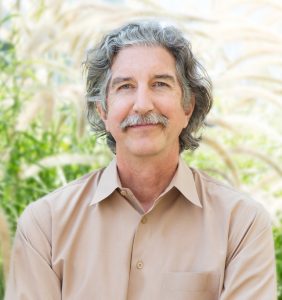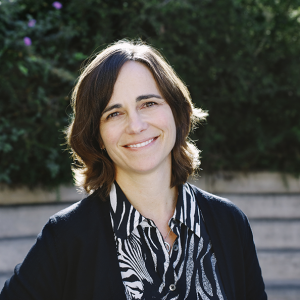
- This event has passed.
Arch Tour Fest: Earvin “Magic” Johnson Recreation Area
November 12, 2022 @ 1:00 pm - 2:00 pm PST
Free
Image Credit: Eric Staudenmaier
Arch Tour Fest: Earvin “Magic” Johnson Recreation Area
Additional information regarding the tour and check-in process will be emailed directly to registrants 24 hours before the event.
This is a FREE event.
Event Partner: U.S. Green Building Council Los Angeles
Located in the community of Willowbrook, the 120-acre Earvin “Magic” Johnson Recreation Area is the largest public open space in South Los Angeles. In the 1980’s, the County of Los Angeles bought and developed the contaminated site, formerly used for oil storage, into a park with grass lawn and two artificial lakes. Heavily used but not well maintained, the facility fell into disrepair and used tremendous amounts of potable water for the lakes and irrigation. Following a comprehensive community process to prioritize new amenities for the park, the LA County Board of Supervisors supported a master plan with the intent of dramatically transforming Magic Johnson Park into a community oasis, further continuing an emerging renaissance in Willowbrook.
The rejuvenated park offers a gateway to nature within the city. A new event center, located alongside a rehabilitated series of lakes, wetlands and native uplands, serves as the visual centerpiece of a regenerative recreational park and a civic center for its unincorporated neighborhood. As a collective oasis, the project demonstrates resilience and social equity in the conversion of a brown field site and artificial lakes into a social, cultural and recreation activity hub. It serves as a national model for sustainably rethinking the social and environmental role of parks in under-served communities.
During this tour, architect Paul Murdoch and landscape architects Jennifer Zell and Gary Lai will discuss how the project became a model for transforming an aging park into a high-performance model of sustainable park design for the 21st century.
Building Credits:
Owner: County of Los Angeles
Architect: Paul Murdoch Architects
Landscape Architect: Ahbe/MIG
Water Engineer: PACE, Restoration
Ecologist: Land IQ, Geotechnical
Engineer: GPI
Civil Engineer: CWE
Structural Engineer: KPFF
MEP: Integral Group
Lighting Design: Horton Lees Brogdon
Environmental Graphics: Selbert Perkins
Acoustic Engineer: Veneklasen
Arborist: Carlberg Associates
Agronomist: Wallace Laboratories
Kitchen Consultant: Webb Food Services
LEED/Sustainability: ZC Sustainability
Cost Estimating: TBD Consultants
Specifications: Chew Specifications
Commissioning: 3Qc, General Contractor: Amoroso
Tour Led By:
Paul Murdoch, AIA, LEED AP, President, Paul Murdoch Architects
Paul Murdoch is president of Paul Murdoch Architects, the Los Angeles based studio he founded in 1991 dedicated to the poetic exploration of sustainable architecture. His firm focuses on the multiple layers of issues and meanings of complex societies and on the improvement of communities and cultures. Through public placemaking, the firm also collaborates with diverse teams to address large-scale, sustainable infrastructure for rapidly expanding urban populations.
Paul has helped pioneer some of the first sustainable design initiatives in Los Angeles, commended by the City, “In recognition of outstanding citizenship… demonstrating the cost-effectiveness and feasibility of designing for the environment.” The American Institute of Architects has honored Paul as an Architect of Healing for his role as a designer of the Flight 93 National Memorial.
Paul is a registered architect, a member of the American Institute of Architects and a LEED Accredited Professional with the U.S. Green Building Council. He has taught at USC’s School of Architecture and has been a guest critic at UCLA and Sci-Arc.
Jennifer Zell, Director of Regenerative Design Studio, MIG
Jennifer Zell is an award-winning landscape architect who leverages two decades of experience to produce innovative design solutions in public, commercial and private landscapes. Jennifer discovered an aptitude for her profession in high school—drawn by the prospect of combining her creativity with her love of the outdoors. Her work encompasses a full range of landscapes throughout Southern California from mountain to desert to sea. Jennifer is constantly engaged by the variety of challenges she encounters and the new solutions she helps to devise. She is committed to finding ways to increase biodiversity in urban areas and utilizes her team building and communication skills to lead efforts that can enhance and sustain the natural world. Through her designs, Jennifer strives to reveal the hidden qualities that make each place a unique experience—framing the space, features, plants, light or geology that exists there and allowing it to be seen anew. She is a speaker and presenter of water and sustainability focused topics and writes for industry publications.
Gary Lai PLA, ASLA, LEED AP BD+C, Landscape Practice Leader, Kimley-Horn
Gary Lai is an accomplished landscape architect and thought leader in sustainability, resiliency and conservation. Gary leverages three decades of design and planning experience to steer large, complex projects to successful completion. His interest in drawing and environmentalism led him to a field that he describes as the ‘architecture of living things’ with an immense potential to impact quality of life for future generations. He has extensive expertise in sustainable design, resiliency and water conservation issues that enable him to focus and maximize the creative energies of project collaborators toward innovative solutions. Gary is committed to local environmental advocacy and education. He is currently the Vice-Chair of the Board of Directors for the United States Green Building Council, Los Angeles, and is a founding member of the new urbanist think tank, New American Dream and the Living Building Challenge Los Angeles Collaborative. He is a Practice Leader for the multi-disciplinary firm, Kimley-Horn, where he focuses on site sustainability, green infrastructure and environmental justice. He has also spoken at numerous conferences on a variety of sustainable and urbanist issues including the Net Zero Conference, Greenbuild and the Municipal Green Building Conference and Expo.
Learning Objectives:
1. Investigate how revitalized urban parks can not only provide beauty and recreation but also become part of sustainable urban infrastructure.
2. Discuss methods of renewal and rejuvenation of a brownfield site and how green infrastructure can add a much-needed amenity to a community.
3. Explore how investment in urban renewal projects in underserved neighborhoods can serve both
environmental and environmental justice goals.
4. Describe building organization and systems that make the interior physically and visually connected and accessible to the park landscape.
5. Identify passive building design strategies used to save energy while accommodating building code restrictions.









